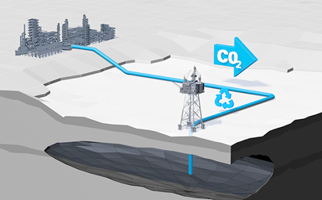The North Sea Transition Authority (NSTA) and Crown Estate Scotland (CES) have today signed a Statement of Intent (SoI) which commits both organisations to work together to realise the tremendous energy and carbon storage potential of the North Sea.
The SoI, which includes a pledge to progress net zero targets by helping different technologies share space, confirms that both bodies are focused on enabling sustainable North Sea business through a coordinated approach to managing the seabed.
The two organisations have distinct but complementary roles in relation to offshore energy and the use and management of the seabed and its resources, and will work together while recognising individual remits.
The SoI highlights common priorities such as working towards coordinated leasing and licensing of carbon storage, enabling carbon capture and storage projects to be developed effectively in Scottish waters in support of the delivery of net zero, and helping to meet UK and Scottish Governments’ net zero and decarbonisation targets.
They also share the ambition to maximise seabed potential, including by identifying opportunities for co-location and co-existence, and addressing opportunities and challenges facing marine industries and the environment.
Effective data sharing, and the efficient delivery of data on platforms such as the Marine Data Exchange and National Data Repository, working together, and with other partners, to further develop a shared evidence base, identifying gaps and commissioning studies to support robust, scientifically sound, evidence-based decision making, and identifying opportunities to accelerate the digital maturity of the offshore energy sector, such as through the Offshore Energy Digital Strategy Group, are also important planks of the SoI agreement.
The two bodies intend to harness their shared values to address challenges including the technical viability of co-location in busy sea space, supporting CCUS developments while considering other energy sectors, marine industries, sea users and the natural environment, addressing challenges and opportunities for the reuse and repurposing of infrastructure for alternative uses and collaborating on electrification of offshore platforms for oil and gas and carbon storage operations, particularly through integration with offshore wind.


